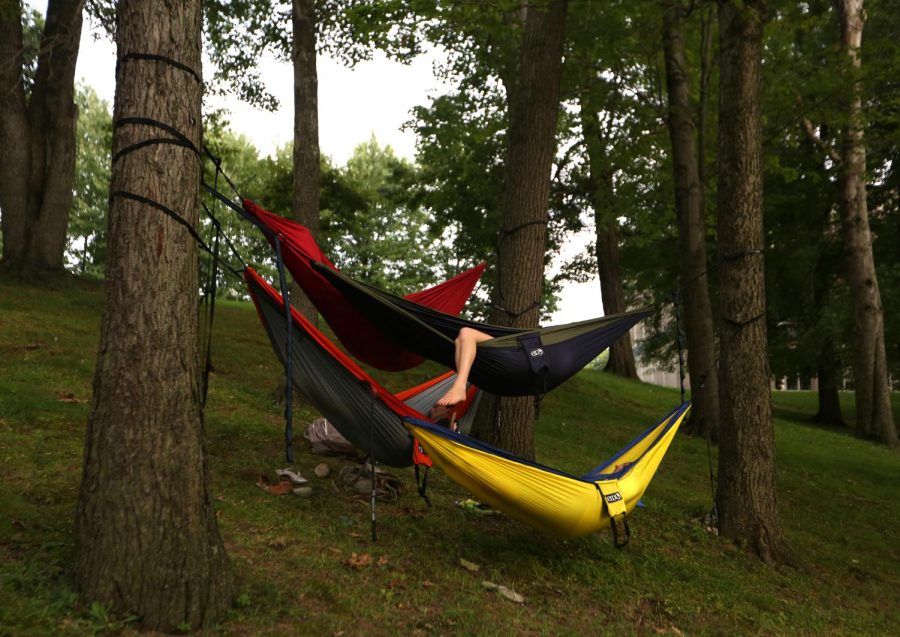Can’t hang: Why college campuses are banning hammocks
September 30, 2015
Hammocks date back thousands of years to Central America, when they were used as beds high above the ground, offering protection from snakes, rodents and other creatures.
Today, college students use the fabric slings to hang out and relax between classes, but some colleges are banning the fabric slings because of damage to trees.
Michigan State University banned hammocks on campus, but a ban is not likely on Kent State’s campus, said Gerald Shanley, Kent city facilities manager and city arborist.
“If you tie something too tightly around the base of a tree and leave it there too long, it can damage the cell tissues under the bark,” he said. “(But) with a hammock, depending on how it is installed, I really can’t see how too much damage would be caused.”
Scientific journal Current Biology published a study in 2011 that found the rocking motions central to swinging in hammocks signal our brains to relax.
“It is proposed that sensory stimulation associated with a swinging motion exerts a synchronizing action in the brain that reinforces endogenous sleep rhythms,” according to the study. “These results thus provide scientific support to the traditional belief that rocking can soothe our sleep.”
Students said they side with Shanley and think a hammock ban would be too harsh.
“I would be devastated if Kent banned hammocks,” said freshman fashion design major Courtney Carpenter. “I do see how they could potentially damage property, but if you’re smart about where you hang it up…no problems will occur from it.”
Carpenter said she has only owned her hammock for a few months, but she said she uses it on campus every time she gets the chance.
She said she prefers hanging outside of her dorm and sometimes finds herself hanging in her dorm room between two lofted beds.
“(Hammocks) are great if you’re just really stressed,” Carpenter said. “You can just lay in one for half an hour and feel better immediately.”
Junior nursing major Melissa Gehring said she has owned her hammock for about two years.
“I’m able to surround myself in the trees and feel more comfortable doing so,” she said. “It’s also easier to carry around and allows me to go into the woods, over a lake or river, which is ultimately more beautiful than sitting in a chair on grass.”
Shanley said students should pay attention to the proper way to install hammocks and avoid tying the handles too tightly around the tree, which can potentially destroy bark or kill entire branches of a tree.
Students should not hang hammocks in younger trees with thinner bark, as those are easier to damage, Shanley said.
“You can take your fingernail and scrape off bark of any given tree, it’s that easy,” he said. “The whole vascular system is right there… so it is possible to cause damage.”
Erin Zaranec is a student life reporter for The Kent Stater. Contact her [email protected].

























